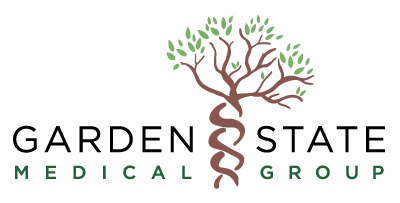Spider veins are known as thread veins or telangiectasia varicose veins. They affect around 60 percent of the world’s population. They appear as fine red lines on your skin’s surface, but people may easily overlook them.
The condition consists of web-like veins that appear on the skin as thin, tiny lines that are slightly raised or flat. While many patients believe spider veins are purely cosmetic, they are often an indication of venous insufficiency, characterized by impaired circulation and blood flow in the legs. Read on to discover more about spider veins.
The Origins of Spider Veins
Although the specific cause of spider veins is unknown, a hereditary component appears to exist. Obesity, extended standing, pregnancy, and the feminine gender have all been linked to their development.
Spider veins can appear in a variety of areas of the body for numerous reasons. They show up on the legs when the veins’ valves fail to operate correctly. The unusual veins occur after preventing blood from flowing backward away from the heart. When such valves are broken or weak, it can restrict blood flow and build up within the vein, causing a blood clot and leading to spider veins.
While some can affect your skin’s appearance, others can indicate a serious medical problem like venous insufficiency, which will require medical care. Even if no symptoms are present, venous insufficiency is a progressive illness that a board-certified vein specialist must assess.
What Is the Distinction Between Spider and Varicose Veins?
Although spider veins and varicose veins are both signs of venous insufficiency, they are not interchangeable. Although they have distinct symptoms, both illnesses manifest in the legs as a result of damaged or compromised venous valves.
Spider veins are tiny, thin threads that run parallel to or across the skin’s surface. They are usually purple, crimson, or blue and cause no pain or suffering. Varicose veins are greater in diameter and run deeper. They have a twisted or lumpy appearance and are usually crimson or flesh-colored.
Additionally, varicose veins can cause pain, irritability, swelling in the ankles or legs, bleeding, or a heavy or achy sensation in the legs. They also increase the risk of blood clots and circulation issues.
The Treatment for Spider Veins
Sclerotherapy, or tiny injections, is the most commonly utilized treatment for spider veins. The procedure involves injecting chemicals in the vein to normalize pressure and blood flow. Typically, the treatment takes only less than an hour.
Patients can return to work and routine activities the next day with minor side effects. While some may suffer slight soreness, tightness, or bruising, sclerotherapy is a painless operation with rarely major adverse effects.
The Risk of Spider Veins
Different variables might increase a person’s risk of acquiring spider veins. While there is no guaranteed cause, they can certainly boost the likelihood of getting them. The following are some of the risk factors for having them:
- Spider veins can develop during pregnancy due to increased blood flow and the strain exerted on leg veins by the fetus’ weight. They may fade or remain permanent after birth.
- Because of genetics, up to 90 percent of people with spider veins have a family relative who has them.
- Females are more vulnerable to them than males.
- With age, vein valves degrade, and calf muscles weaken. Spider veins can appear as people age, particularly in the legs.
- Being overweight puts tension on the veins in the legs, causing spider veins to grow.
- It can occur in women as a result of estrogen-based menopause or birth control pills.
- Long periods of sitting or standing cause veins to work harder to pump blood to the heart, resulting in spider veins.
- Previous blood clots or vein damage, further failing to function well in the future.
- Sun exposure can cause blood vessels to break, leading to spider veins on the face.
How to Prevent Spider Veins
While it is difficult to avoid something that you aren’t sure you have, there are steps that you can take to lessen the risk of spider veins. Numerous lifestyle choices you must avoid can dramatically decrease your risk of having vein problems. Obesity, inactivity, poor circulation, a low-fiber, high-salt diet, and prolonged standing are all examples.
Conclusion
Because spider veins are superficial and are replaced by healthy veins, it has little influence on your overall health. Although prominent veins are not a medical problem, many people prefer to remove them for cosmetic reasons. After all, the primary treatment for them is simple and allows only for collapsing of the vein and cutting off the blood supply.
Are you looking for a med-spa in New Jersey? NULUK (New look) Aesthetics is a patient-focused, custom-crafted med-spa. We provide many treatment alternatives to help you repair and revive your natural beauty. Throughout every session, we learn about your intended additions or refinements to restore your natural appeal. Get a FREE consultation with us today!


